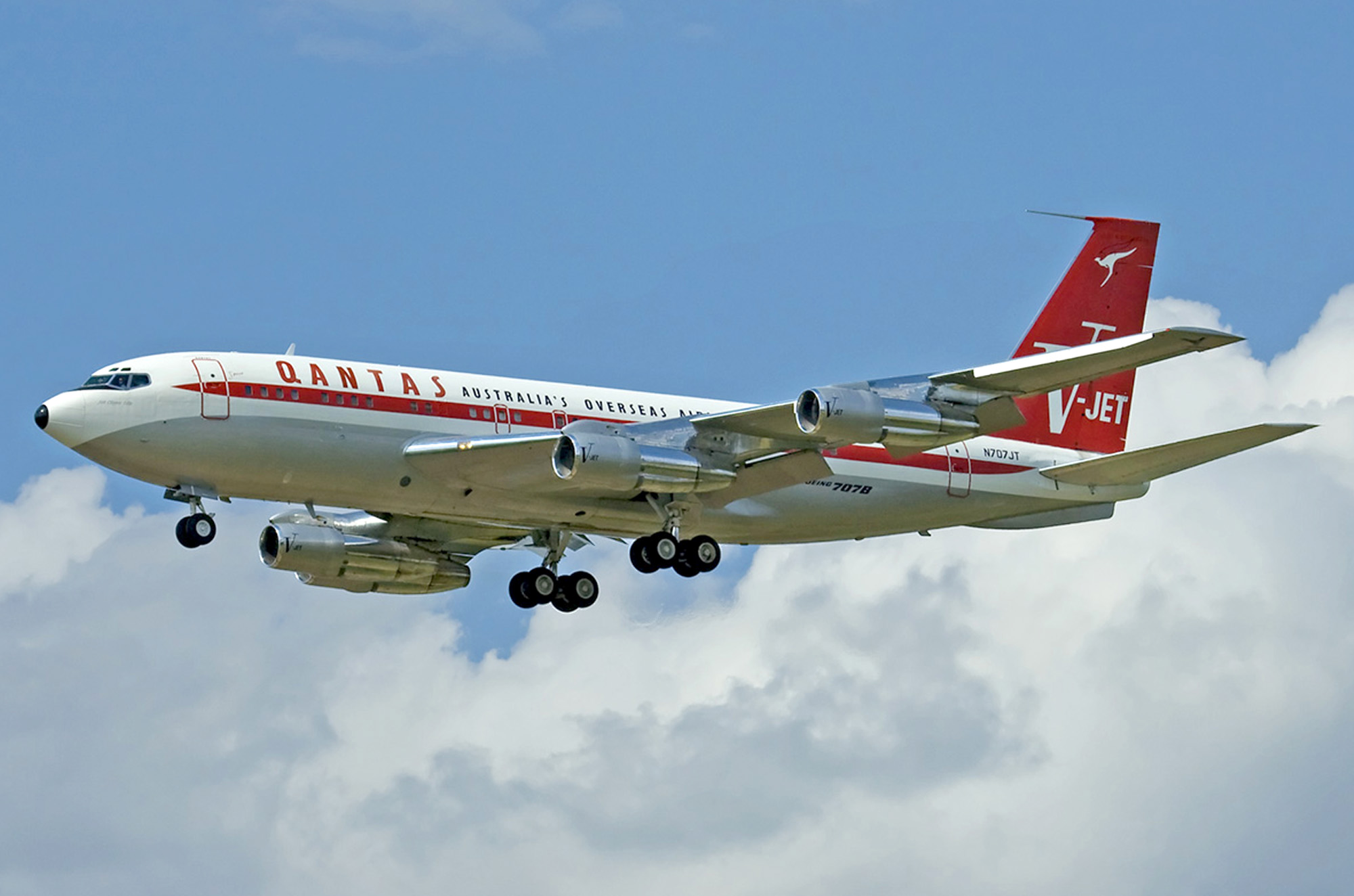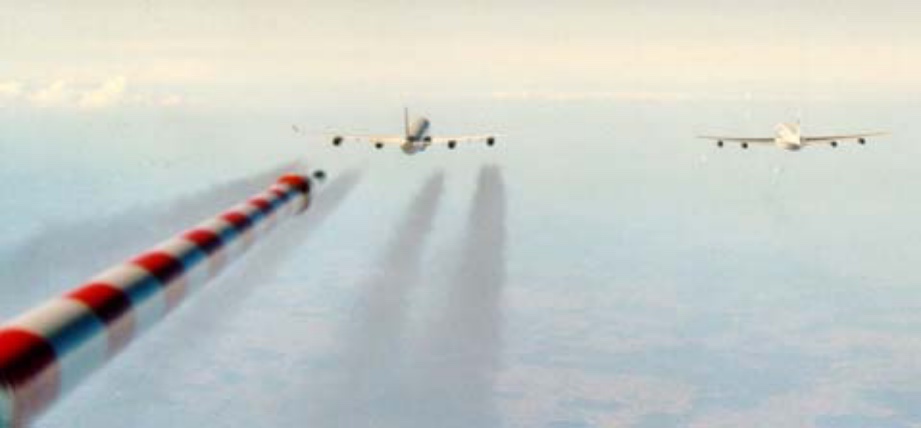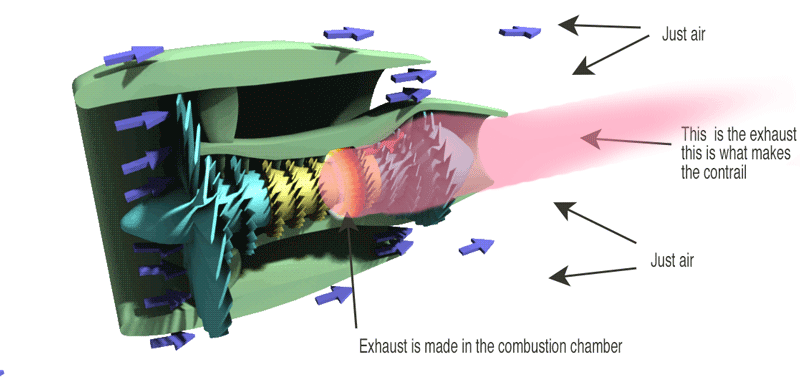
In a rather odd reversal of known science, the latest chemtrail theory is that modern high-bypass engines do not create contrails. A comprehensive explanation of why this is incorrect can be found in the following video:
As noted towards the end of the video, the idea can be debunked simply by a review of the scientific literature. The likelyhood that a particular engine will create a contrail is governed by the "contrail factor", and this is higher for high bypass engines - I encourage you to research this for yourself, and I give some links below.
The classic demonstration of high bypass engines producing more contrails is the study:
Ulrich Schumann and Reinhold Busen, 2000, Experimental Test of the Influence of Propulsion Efficiency on Contrail Formation
http://elib.dlr.de/9247/1/aerscitech-2000.pdf
For a direct test, a formation flight of two different large jet air- craft was arranged, wing by wing, during an ascent and a descent of the aircraft. Contrail formation and ambient conditions were observed simultaneously from a research aircraft. The two contrail
forming aircraft were 1) a Boeing B707-307C built in 1968 and equipped with four jet engines of type PW JT3D-3B with bypass ratio of 1.4 and 2) an Airbus A340-300 built in 1998 with four jet engines of type CFM56-5C4 with bypass ratio of 6.8.
...
A contrail was observed to form during ascent first behind the A340 at 7:28:40, at flight level 33,300ft. The B707 continued to ascend nearby without a contrail (Fig. 2). About 50 s later, at altitude of about 33,700 ft, a contrail formed also behind the B707 at 7:29:30. The contrails were observed to be forming very suddenly and persisted thereafter. During descent from flight level 35,000ft, the contrails disappeared first behind the B707 and disappeared shortly thereafter behind the A340.
...
As documented in several photographs, an altitude range exists in which the A340 causes contrails while the B707 causes none. Figure 2 shows this fact during ascent and Fig. 3 during descent. The photographs show the contrails best during descent due to the more favorable sun and Falcon positions relative to the two other aircraft. We clearly see the four contrails forming from the four engines of the A340 while the B707 is seen flying without contrails.
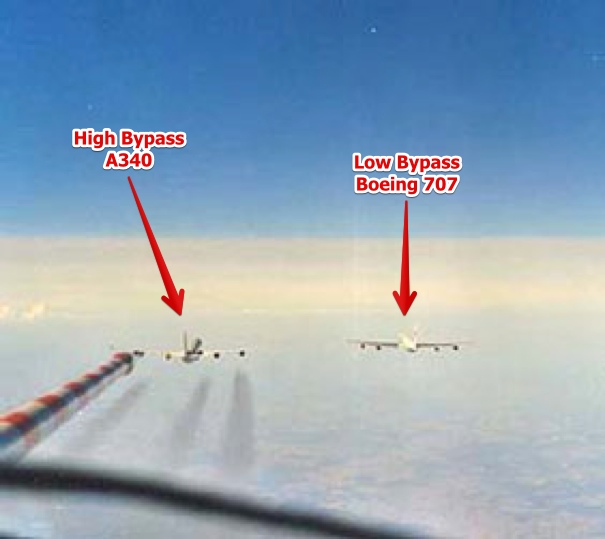
As you can see, the newer high-bypass A340 produces contrails more frequently than the older, low-bypass B707
Schrader, Mark L., 1997: Calculations of Aircraft Contrail Formation Critical Temperatures. J. Appl. Meteor., 36, 1725–1729.
http://journals.ametsoc.org/doi/full/10.1175/1520-0450(1997)036<1725:COACFC>2.0.CO;2
Fig 4 shows contrails forming at a wider range of temperatures than non or low-bypass engines. You don't have to follow exactly what the graphs mean, just note that for the high-bypass engine, the curves intersect the bottom axis at a higher temperature than the low-bypass or non-bypass engines.Appleman diagrams for specific engine types (Saatzer 1995) are shown in Figs. 4a–c. Tables are provided in the appendix. Contrail factors for bypass engines are higher than those for nonbypass engines because the core exit temperature is reduced by extracting some energy to turn the fan.
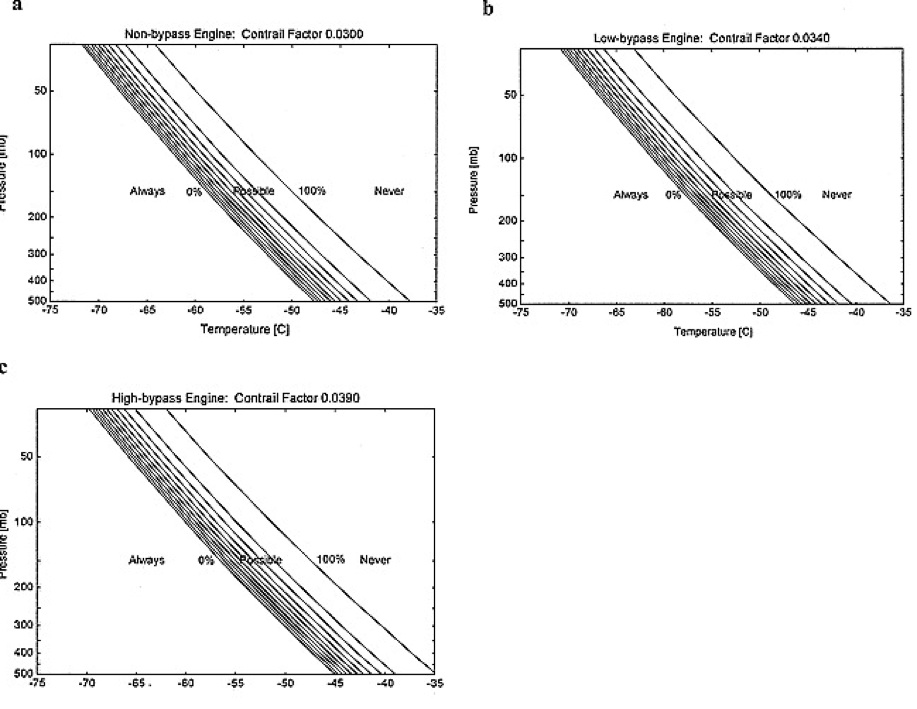
Walters, Michael K., Jeffrey D. Shull, Robert P. Asbury, 2000: A Comparison of Exhaust Condensation Trail Forecast Algorithms at Low Relative Humidity. J. Appl. Meteor., 39, 80–91.
http://journals.ametsoc.org/doi/full/10.1175/1520-0450(2000)039<0080:ACOECT>2.0.CO;2
Influence of propulsion efficiency on contrail formation Ulrich SchumannAlthough the contrail factor for an individual aircraft varies as flight parameters change, Schrader (1997) pointed out that one can use representative values for the contrail factor that account for the generic propulsion efficiencies of typical engine types when preparing contrail forecasts used for different types of aircraft at the same time. This procedure is currently followed by the AFWA, which produces separate contrail forecasts for high-bypass, nonbypass, and low-bypass engine types. Because propulsion efficiency is highest for high-bypass engines and lowest for nonbypass engines, high-bypass engines have the highest contrail factors, and nonbypass engines have the lowest contrail factors (Schrader 1997).
http://www.sciencedirect.com/science/article/pii/S1270963800010622
Lynch, David K., et al, 2002: Cirrus, Oxford University PressAircraft cause contrails when flying in an atmosphere colder than a threshold temperature which depends on the overall efficiency η of propulsion of the aircraft/engine combination. Higher η causes contrails at higher ambient temperatures and over a larger range of flight altitudes. The ratio of temperature increase relative to moisture increase in engine plumes is lower for engines with higher η . Thermodynamic arguments are given for this fact and measurements and observations are reported which support the validity of the given criterion. The measurements include contrail observations for identified aircraft flying at ambient temperature and humidity conditions measured with high precision in-situ instruments, measurements of the temperature and humidity increases in an aircraft exhaust plume, and an observation of contrail formation behind two different four-engine jet aircraft with different engines flying wing by wing. The observations show that an altitude range exists in which the aircraft with high efficiency causes contrails while the other aircraft with lower efficiency causes none. Aircraft with more efficient propulsion cause contrails more frequently. The climatic impact depends on the relative importance of increased contrail frequency and reduced carbon dioxide emissions for increased efficiency, and on other parameters, and has not yet been quantified.
http://books.google.com/books?id=58v1fg4xeo8C&lpg=PA233&ots=_-uNkL6yUM&dq=contrail factor high bypass&pg=PA233#v=onepage&q&f=false
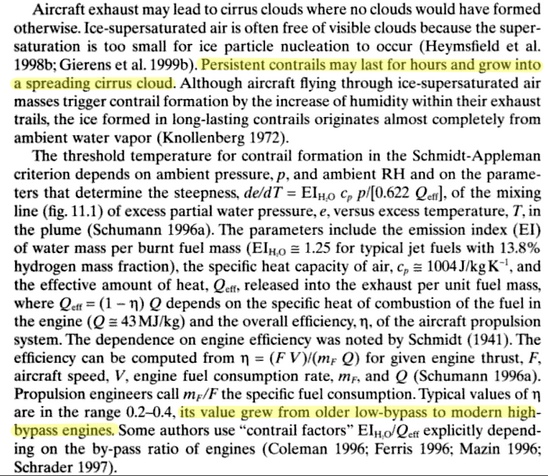
See also:
https://www.metabunk.org/threads/engine-efficiency-high-bypass-and-contrail-frequency-how-much.226/
So what did the theorists get wrong?
This theory is particularly odd in the context of the chemtrail theory, as that normally claims that in previous decades (generally the 1980s and before) there were no persistent contrails, and that the contrails we see now are something new. But this new spin on the chemtrail theory seems to be arguing the opposite - that older planes would make contrails, and new planes will not.
The thinking behind the "high-bypass = no contrails" seems to be the idea that the contrail is made from the air that an engine pushes backwards. This is incorrect - simply pushing air does not create an exhaust contrail. An exhaust contrail is created from, as the name implies, the exhaust of the the engine.

The exhaust of the engine is the gasses that come out of the combustion chamber. It's the product of burning kerosene (hydrogen and carbon) with the oxygen in the air, and the result is carbon dioxide and dihydrogen monoxide (water). It's the water in the exhaust that makes the contrail. And the exhaust gasses are basically the same regardless of if it's a low-bypass, no-bypass, high-bypass or even an internal combustion engine.
What creates a contrail is the mixing of the exhaust with cooler air. It does not matter if it's mixing with the air that passed through the bypass fan, or if it's mixing with the air that passed around the engine. It's still just exhaust gases mixing with the air. As the gasses mix, the temperature falls, and the water condenses out.
The only difference with a high bypass engine is that the exhaust gasses in a high bypass engine are a little less hot (more of the energy has gone into producing thrust from the bypass fan). So they reach the condensation point quicker, and so are more likely to form contrails.
In reality, any plane can make a contrail. High bypass, low bypass, no bypass, even prop planes will make contrails. And they always have.
Last edited:

